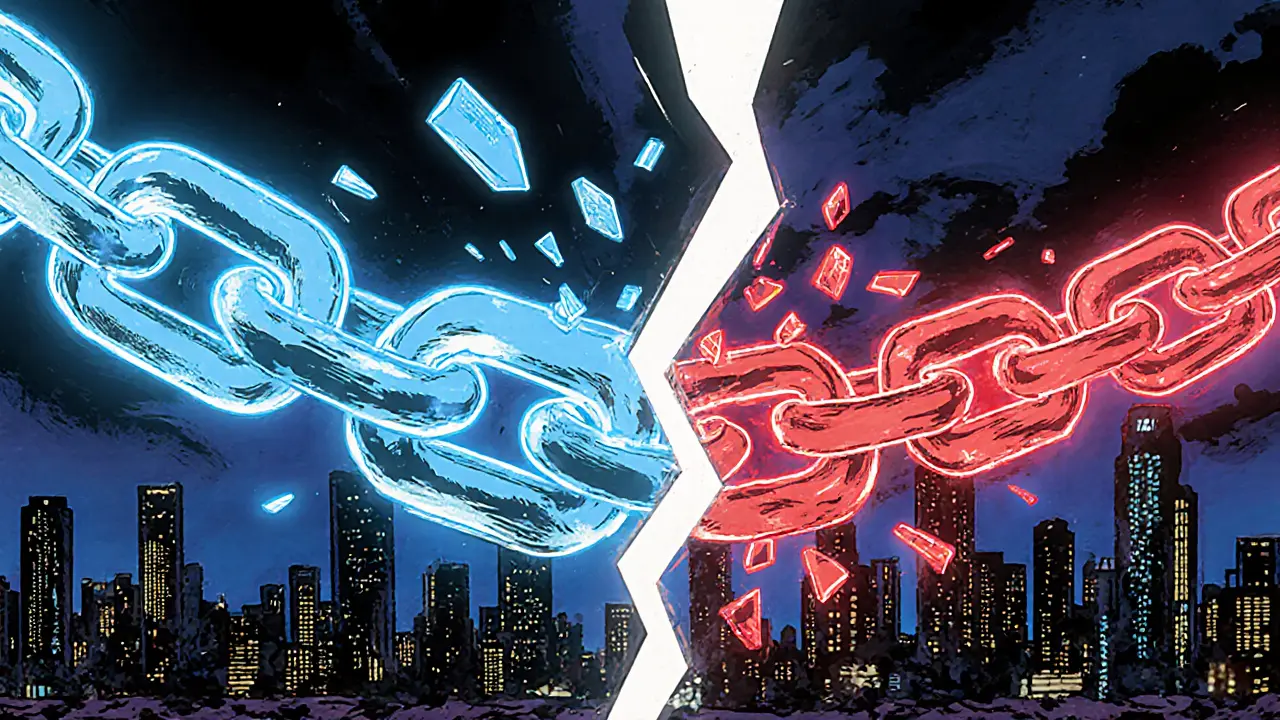Contentious vs Planned Forks: A Blockchain Guide
Learn the key differences between contentious and planned blockchain forks, their technical traits, market impact, and how governance shapes each type.
Read MoreEver wonder why a crypto suddenly changes its rules or why a new token suddenly appears? When working with blockchain governance, the system that lets participants steer protocol decisions, upgrades, and rule changes in a decentralized network. Also known as crypto governance, it determines who can propose changes, how those proposals get approved, and what happens when the community disagrees.
A core pillar of blockchain governance is the DAO, a decentralized autonomous organization that enables token‑holders to vote on proposals without a central authority. DAOs provide the on‑chain voting mechanism that many networks rely on for upgrades. Another essential piece is the protocol upgrade, a planned change to the underlying code that can improve security, add features, or fix bugs. Upgrades usually go through a proposal‑vote‑implementation cycle, linking them directly to DAO decisions. When upgrades are contentious, they can trigger a fork, a split in the blockchain where two separate chains continue with different rule sets, either soft (backward‑compatible) or hard (non‑compatible). Forks reshape the governance landscape by forcing the community to choose which chain to support. Finally, validator slashing, a penalty mechanism in proof‑of‑stake networks that confiscates a portion of a validator’s stake for misbehavior protects the network’s integrity, ensuring that those who help secure the chain act honestly—a governance safeguard that underpins trust.
Understanding these entities helps you see why governance matters in practice. For example, Celestia’s modular blockchain design separates data availability from execution, allowing rollup projects to upgrade independently while still relying on Celestia’s consensus. This separation reduces the risk of a single point of failure and makes governance decisions more granular. In the DePIN space, projects like Helium let token holders vote on network expansions, blending physical infrastructure with on‑chain governance. Meanwhile, P2P technology evolution—from early file‑sharing to modern blockchain networks—shows how consensus mechanisms and governance models evolve together to improve scalability.
When a blockchain community faces a major change, the three-step governance loop—proposal, vote, implementation—plays out across many of the articles you’ll find below. Whether it’s a hard fork explained in “Blockchain Forks Explained,” a detailed look at slashing protection for validators, or a case study of how modular chains like Celestia enable smoother upgrades, each piece adds a layer to the bigger picture. You’ll also see how token classifications (utility vs. security) and regulatory shifts impact governance frameworks, especially for emerging assets like crypto ETFs or DeFi tokens.
Armed with this context, you can navigate the complex world of blockchain governance with confidence. Below you’ll discover deep dives, practical guides, and up‑to‑date analyses that break down each component—from DAO voting mechanics to the technical nuances of fork execution—so you can make informed decisions, whether you’re a token holder, developer, or just curious about how decentralized systems stay resilient.

Learn the key differences between contentious and planned blockchain forks, their technical traits, market impact, and how governance shapes each type.
Read More